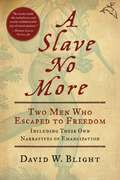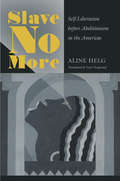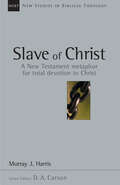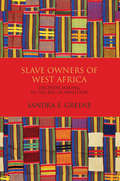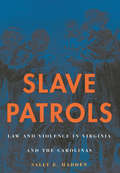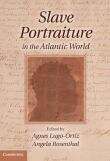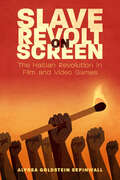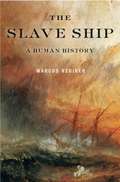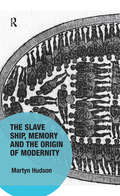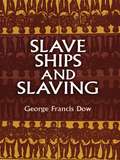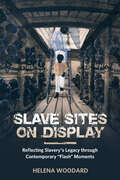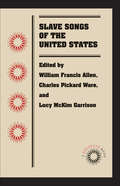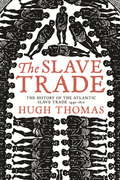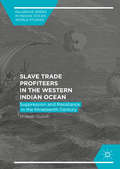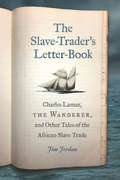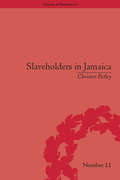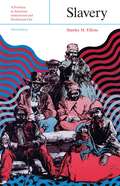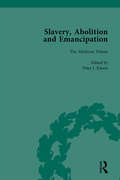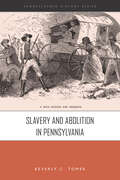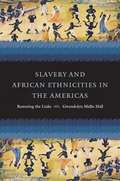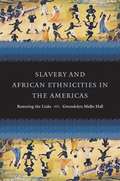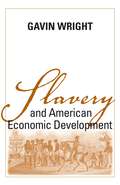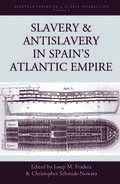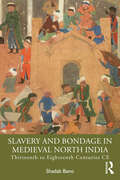- Table View
- List View
A Slave No More: Two Men Who Escaped to Freedom, Including Their Own Narratives of Emancipation
by David W. BlightThe newly discovered slave narratives of John Washington and Wallace Turnage—and their harrowing and empowering journey to emancipation. Slave narratives, among the most powerful records of our past, are extremely rare, with only fifty-five surviving post-Civil War. This book is a major new addition to this imperative part of American history—the firsthand accounts of two slaves, John Washington and Wallace Turnage, who through a combination of intelligence, daring, and sheer luck, reached the protection of the occupying Union troops and found emancipation. In A Slave No More, David W. Blight enriches the authentic narrative texts of these two young men using a wealth of genealogical information, handed down through family and friends. Blight has reconstructed their childhoods as sons of white slaveholders, their service as cooks and camp hands during the Civil War, and their struggle to stable lives among the black working class in the north, where they reunited their families. In the previously unpublished manuscripts of Turnage and Washington, we find history at its most intimate, portals that offer a startling new answer to the question of how four million people moved from slavery to liberty. Here are the untold stories of two extraordinary men whose stories, once thought lost, now take their place at the heart of the American experience—as Blight rightfully calls them, &“heroes of a war within the war.&” &“These powerful memoirs reveal poignant, heroic, painful and inspiring lives.&”—Publishers Weekly
Slave No More: Self-Liberation before Abolitionism in the Americas
by Aline HelgCommanding a vast historiography of slavery and emancipation, Aline Helg reveals as never before how significant numbers of enslaved Africans across the entire Western Hemisphere managed to free themselves hundreds of years before the formation of white-run abolitionist movements. Her sweeping view of resistance and struggle covers more than three centuries, from early colonization to the American and Haitian revolutions, Spanish American independence, and abolition in the British Caribbean. Helg not only underscores the agency of those who managed to become "free people of color" before abolitionism took hold but also assesses in detail the specific strategies they created and utilized.While recognizing the powerful forces supporting slavery, Helg articulates four primary liberation strategies: flight and marronage; manumission by legal document; military service, for men, in exchange for promised emancipation; and revolt—along with a willingness to exploit any weakness in the domination system. Helg looks at such actions at both individual and community levels and in the context of national and international political movements. Bringing together the broad currents of liberal abolitionism with an original analysis of forms of manumission and marronage, Slave No More deepens our understanding of how enslaved men, women, and even children contributed to the slow demise of slavery.
Slave of Christ: A New Testament Metaphor for Total Devotion to Christ (New Studies in Biblical Theology #Volume 8)
by Murray J. HarrisThe New Testament finds many ways to depict the relationship of Christians and their Lord. They are his disciples, sons, daughters and friends. But it is perhaps too little recognized that they are also his slaves. In this New Studies in Biblical Theology volume, Murray J. Harris sets out to uncover what it means to be a slave of Christ. He begins by assessing the nature of actual slavery in the Greco-Roman world and the New Testament's attitude towards it. Drawing insights from this, he goes on to unfold the metaphor of slavery to Christ. Among the topics discussed are slavery and spiritual freedom, lordship, ownership, and privilege. Slave of Christ is a model of good biblical theology, providing insights both for future study of the Bible and for practical application. Addressing key issues in biblical theology, the works comprising New Studies in Biblical Theology are creative attempts to help Christians better understand their Bibles. The NSBT series is edited by D. A. Carson, aiming to simultaneously instruct and to edify, to interact with current scholarship and to point the way ahead.
Slave Owners of West Africa: Decision Making in the Age of Abolition
by Sandra E. GreeneIn this groundbreaking book, Sandra E. Greene explores the lives of three prominent West African slave owners during the age of abolition. These first-published biographies reveal personal and political accomplishments and concerns, economic interests, religious beliefs, and responses to colonial rule in an attempt to understand why the subjects reacted to the demise of slavery as they did. Greene emphasizes the notion that the decisions made by these individuals were deeply influenced by their personalities, desires to protect their economic and social status, and their insecurities and sympathies for wives, friends, and other associates. Knowing why these individuals and so many others in West Africa made the decisions they did, Greene contends, is critical to understanding how and why the institution of indigenous slavery continues to influence social relations in West Africa to this day.
Slave Patrols: Law and Violence in Virginia and the Carolinas (Harvard historical studies ; #138)
by Sally E. Hadden"Obscured from our view of slaves and masters in America is a critical third party: the state, with its coercive power. This book completes the grim picture of slavery by showing us the origins, the nature, and the extent of slave patrols in Virginia and the Carolinas from the late seventeenth century through the end of the Civil War. Here we see how the patrols, formed by county courts and state militias, were the closest enforcers of codes governing slaves throughout the South. Mining a variety of sources, Sally Hadden presents the views of both patrollers and slaves as she depicts the patrols, composed of “respectable” members of society as well as poor whites, often mounted and armed with whips and guns, exerting a brutal and archaic brand of racial control inextricably linked to post–Civil War vigilantism and the Ku Klux Klan. City councils also used patrollers before the war, and police forces afterward, to impose their version of race relations across the South, making the entire region, not just plantations, an armed camp where slave workers were controlled through terror and brutality."
Slave Portraiture in the Atlantic World
by Agnes Lugo-Ortiz Angela RosenthalSlave Portraiture in the Atlantic World is the first book to focus on the individualized portrayal of enslaved people from the time of Europe's full engagement with plantation slavery in the late sixteenth century to its final official abolition in Brazil in 1888. While this period saw the emergence of portraiture as a major field of representation in Western art, "slave" and "portraiture" as categories appear to be mutually exclusive. On the one hand, the logic of chattel slavery sought to render the slave's body as an instrument for production, as the site of a non-subject. Portraiture, on the contrary, privileged the face as the primary visual matrix for the representation of a distinct individuality. The essays in this volume address this apparent paradox of "slave portraits" from a variety of interdisciplinary perspectives. They probe the historical conditions that made the creation of such rare and enigmatic objects possible and explore their implications for a more complex understanding of power relations under slavery.
Slave Revolt on Screen: The Haitian Revolution in Film and Video Games (Caribbean Studies Series)
by Alyssa Goldstein SepinwallRecipient of the 2021 Honorary Mention for the Haiti Book Prize from the Haitian Studies AssociationIn Slave Revolt on Screen: The Haitian Revolution in Film and Video Games author Alyssa Goldstein Sepinwall analyzes how films and video games from around the world have depicted slave revolt, focusing on the Haitian Revolution (1791–1804). This event, the first successful revolution by enslaved people in modern history, sent shock waves throughout the Atlantic World. Regardless of its historical significance however, this revolution has become less well-known—and appears less often on screen—than most other revolutions; its story, involving enslaved Africans liberating themselves through violence, does not match the suffering-slaves-waiting-for-a-white-hero genre that pervades Hollywood treatments of Black history. Despite Hollywood’s near-silence on this event, some films on the Revolution do exist—from directors in Haiti, the US, France, and elsewhere. Slave Revolt on Screen offers the first-ever comprehensive analysis of Haitian Revolution cinema, including completed films and planned projects that were never made. In addition to studying cinema, this book also breaks ground in examining video games, a pop-culture form long neglected by historians. Sepinwall scrutinizes video game depictions of Haitian slave revolt that appear in games like the Assassin’s Creed series that have reached millions more players than comparable films. In analyzing films and games on the revolution, Slave Revolt on Screen calls attention to the ways that economic legacies of slavery and colonialism warp pop-culture portrayals of the past and leave audiences with distorted understandings.
The Slave Ship: A Human History
by Marcus RedikerThe missing link in the chain of American slavery. For three centuries slave ships carted millions of people from the coasts of Africa across the Atlantic to the Americas. Much is known of the slave trade and the American plantation system, but little of the ships that made it all possible. In The Slave Ship, award-winning historian Marcus Rediker draws on thirty years of research in maritime archives to create an unprecedented history of these vessels and the human drama acted out on their rolling decks. He reconstructs in chilling detail the lives, deaths, and terrors of captains, sailors, and the enslaved aboard a "floating dungeon" trailed by sharks. From the young African kidnapped from his village and sold into slavery by a neighboring tribe to the would-be priest who takes a job as a sailor on a slave ship only to be horrified at the evil he sees to the captain who relishes having "a hell of my own," Rediker illuminates the lives of people who were thought to have left no trace. This is a tale of tragedy and terror, but also an epic of resilience, survival, and the creation of something entirely new. Marcus Rediker restores the slave ship to its rightful place alongside the plantation as a formative institution of slavery, a place where a profound and still haunting history of race, class, and modern economy was made.
The Slave Ship, Memory and the Origin of Modernity (Memory Studies: Global Constellations)
by Martyn HudsonTraces; slave names, the islands and cities into which we are born, our musics and rhythms, our genetic compositions, our stories of our lost utopias and the atrocities inflicted upon our ancestors, by our ancestors, the social structure of our cities, the nature of our diasporas, the scars inflicted by history. These are all the remnants of the middle passage of the slave ship for those in the multiple diasporas of the globe today, whose complex histories were shaped by that journey. Whatever remnants that once existed in the subjectivities and collectivities upon which slavery was inflicted has long passed. But there are hints in material culture, genetic and cultural transmissions and objects that shape certain kinds of narratives - this is how we know ourselves and how we tell our stories. This path-breaking book uncovers the significance of the memory of the slave ship for modernity as well as its role in the cultural production of modernity. By so doing, it examines methods of ethnography for historical events and experiences and offers a sociology and a history from below of the slave experience. The arguments in this book show the way for using memory studies to undermine contemporary slavery.
Slave Ships and Slaving (African American)
by George Francis DowThe long, grim story of the slave trade is a tragic historical narrative. This darkest and most heartless era in African-American history saw millions of Africans kidnapped and sold into bondage in the West Indies, the American colonies, and later, the United States. <p><p> This history is recalled firsthand in this extraordinary shocking collection of commentaries by ships' doctors and captains as well as written testimonies for a parliamentary committee investigating the slave trade. Accounts vary from sympathetic to indifferent as the narrators relate horrifying events and conditions of extreme cruelty. Detailed descriptions of suppressed mutinies on slave ships and life in "factories" — penned areas that held slaves until they were put aboard ships — are followed by vivid accounts of living conditions on the vessels (for both slaves and sailors), as well as commentary on the commercial structure of the slave trade. More than 50 period engravings and other illustrations depicting slave markets; handcuffs, shackles, and other restraints; and the stowing of slaves aboard ship accompany the staggering record. <p> A basic sourcebook for students of African-American history, this volume is also essential reading for anyone concerned with the genealogy of the social ills and inequities of modern life.
Slave Sites on Display: Reflecting Slavery's Legacy through Contemporary "Flash" Moments (Atlantic Migrations and the African Diaspora)
by Helena WoodardAt Senegal’s House of Slaves, Barack Obama’s presidential visit renewed debate about authenticity, belonging, and the myth of return—not only for the president, but also for the slave fort itself. At the African Burial Ground National Monument in New York, up to ten thousand slave decedents lie buried beneath the area around Wall Street, which some of them helped to build and maintain. Their likely descendants, whose activism produced the monument located at that burial site, now occupy its margins. The Bench by the Road slave memorial at Sullivan’s Isle near Charleston reflects the region’s centrality in slavery’s legacy, a legacy made explicit when the murder of nine black parishioners by a white supremacist led to the removal of the Confederate flag from the state’s capitol grounds. Helena Woodard considers whether the historical slave sites that have been commemorated in the global community represent significant progress for the black community or are simply an unforgiving mirror of the present.In Slave Sites on Display: Reflecting Slavery’s Legacy through Contemporary “Flash” Moments, Woodard examines how select modern-day slave sites can be understood as contemporary “flash” moments: specific circumstances and/or seminal events that bind the past to the present. Woodard exposes the complex connections between these slave sites and the impact of race and slavery today. Though they differ from one another, all of these sites are displayed as slave memorials or monuments and function as high-profile tourist attractions. They interpret a story about the history of Atlantic slavery relative to the lived experiences of the diaspora slave descendants that organize and visit the sites.
Slave Songs of the United States
by Lucy Mckim Garrison William Francis Allen Charles Pickard WareFirst published in 1867, Slave Songs of the United States represents the work of its three editors, all of whom collected and annotated these songs while working in the Sea Islands of South Carolina during the Civil War, and also of other collectors who transcribed songs sung by former slaves in other parts of the country. The transcriptions are preceded by an introduction written by William Francis Allen, the chief editor of the collection, who provides his own explanation of the origin of the songs and the circumstances under which they were sung. One critic has noted that, like the editors' introductions to slave narratives, Allen's introduction seeks to lend to slave expressions the honor of white authority and approval. Gathered during and after the Civil War, the songs, most of which are religious, reflect the time of slavery, and their collectors worried that they were beginning to disappear. Allen declares the editors' purpose to be to preserve, "while it is still possible... these relics of a state of society which has passed away." A DOCSOUTH BOOK. This collaboration between UNC Press and the University of North Carolina at Chapel Hill Library brings selected classic works from the digital library of Documenting the American South back into print. DocSouth Books uses the latest digital technologies to make these works available as downloadable e-books or print-on-demand publications. DocSouth Books are unaltered from the original publication, providing affordable and easily accessible editions to a new generation of scholars, students, and general readers.
The Slave Trade: The Story Of The Atlantic Slave Trade, 1440-1870
by Hugh ThomasThe Atlantic slave trade was one of the largest and most elaborate maritime and commercial ventures. Between 1492 and about 1870, ten million or more black slaves were carried from Africa to one port or another of the Americas.In this wide-ranging book, Hugh Thomas follows the development of this massive shift of human lives across the centuries until the slave trade's abolition in the late nineteenth century.
Slave Trade Profiteers in the Western Indian Ocean: Suppression and Resistance in the Nineteenth Century (Palgrave Series in Indian Ocean World Studies)
by Hideaki SuzukiThis book examines how slave traders interacted with and resisted the British suppression campaign in the nineteenth-century western Indian Ocean. By focusing on the transporters, buyers, sellers, and users of slaves in the region, the book traces the many links between slave trafficking and other types of trade. Drawing upon first-person slave accounts, travelogues, and archival sources, it documents the impact of abolition on Zanzibar politics, Indian merchants, East African coastal urban societies, and the entirety of maritime trade in the region. Ultimately, this ground-breaking work uncovers how western Indian Ocean societies experienced the slave trade suppression campaign as a political intervention, with important implications for Indian Ocean history and the history of the slave trade.
The Slave-Trader's Letter-Book: Charles Lamar, The Wanderer, and Other Tales of the African Slave Trade (UnCivil Wars)
by Jim JordanLong-lost letters tell the story of an illegal slave shipment, a desperate Savannah businessman, and the lead-up to the Civil War. In 1858 Savannah businessman Charles Lamar, in violation of U.S. law, organized the shipment of hundreds of Africans on the luxury yacht Wanderer to Jekyll Island, Georgia. The four hundred survivors of the Middle Passage were sold into bondage. This was the first successful documented slave landing in the United States in about four decades, and it shocked a nation already on the path to civil war. Nearly thirty years later, the North American Review published excerpts from thirty of Lamar&’s letters, reportedly taken from his letter book, which describe his criminal activities. However, the authenticity of the letters was in doubt until very recently. In the twenty-first century, researcher Jim Jordan found a cache of private papers belonging to Charles Lamar&’s father, stored for decades in an attic in New Jersey. Among the documents was Charles Lamar&’s letter book—confirming him as the author. The first part of this book recounts the flamboyant and reckless life of Lamar himself, including involvement in southern secession, the slave trade, and a plot to overthrow the government of Cuba. A portrait emerges at odds with Lamar's previous image as a savvy entrepreneur and principled rebel. Instead, we see a man who was often broke and whose volatility sabotaged him at every turn. His involvement in the slave trade was driven more by financial desperation than southern defiance. The second part presents the &“Slave-Trader's Letter-Book.&” Together with annotations, these seventy long-lost letters shed light on the lead-up to the Civil War from the remarkable perspective of a troubled, and troubling, figure.
Slaveholders in Jamaica: Colonial Society and Culture during the Era of Abolition (Empires in Perspective #11)
by Christer PetleyExplores the social composition of the Jamaican slaveholding class during the era of the British campaign to end slavery, looking at their efforts to maintain control over local society and considering how their economic, cultural and military dependency on the colonial metropole meant that they were unable to avert the ending of British slavery.
Slaveries since Emancipation: Child Slavery Before and After Emancipation
by Duane Anna MaeIf we are to fully understand how slavery survived legal abolition, we must grapple with the work that abolition has left undone, and dismantle the structures that abolition has left in place. Child Slavery before and after Emancipation seeks to enable a vital conversation between historical and modern slavery studies - two fields that have traditionally run along parallel tracks rather than in relation to one another. In this collection, Anna Mae Duane and her interdisciplinary group of contributors seek to build historical and contemporary bridges between race-based chattel slavery and other forms of forced child labor, offering a series of case studies that illuminate the varied roles of enslaved children. Duane provides a provocative, historically grounded set of inquiries that suggest how attending to child slaves can help to better define both slavery and freedom.
Slavery: A Problem in American Institutional and Intellectual Life
by Stanley M. ElkinsThis third edition of Stanley M. Elkin's classic study offers two new chapters by the author. The first, "Slavery and Ideology," considers the discussion and criticism occasioned by this controversial work. Elkins amplifies his original purpose in writing the book and takes into consideration the substantial body of critical commentary. He also attempts a prediction on the course of future research and discussion.
Slavery, Abolition and Emancipation Vol 2: Writings In The British Romantic Period
by Peter J Kitson Debbie Lee Anne K Mellor James WalvinMost writers associated with the first generation of British Romanticism - Blake, Coleridge, Wordsworth, Southey, Thelwall, and others - wrote against the slave trade. This edition collects a corpus of work which reflects the issues and theories concerning slavery and the status of the slave.
Slavery and Abolition in Pennsylvania (Pennsylvania History)
by Beverly C. TomekIn her concise history Slavery and Abolition in Pennsylvania, Beverly Tomek corrects the long-held notion that slavery in the North was “not so bad” as, or somehow “more humane” than, in the South due to the presence of abolitionists. While the Quaker presence focused on moral and practical opposition to bondage, slavery was ubiquitous. Nevertheless, Pennsylvania was the first state to pass an abolition law in the United States. Slavery and Abolition in Pennsylvania traces this movement from its beginning to the years immediately following the American Civil War. Discussions of the complexities of the state’s antislavery movement illustrate how different groups of Pennsylvanians followed different paths in an effort to achieve their goal. Tomek also examines the backlash abolitionists and Black Americans faced. In addition, she considers the civil rights movement from the period of state reconstruction through the national reconstruction that occurred after the Civil War. While the past few decades have shed light on enslavement and slavery in the South, much of the story of northern slavery remains hidden. Slavery and Abolition in Pennsylvania tells the full and inclusive story of this history, bringing the realities of slavery, abolition, and Pennsylvania's attempt to reconstruct its post-emancipation society.
Slavery and African Ethnicities in the Americas: Restoring the Links
by Gwendolyn Midlo HallDrawing on a wide range of materials in four languages as well as on a lifetime of study of slave groups in the New World, Gwendolyn Midlo Hall explores the persistence of African ethnic identities among the enslaved over four hundred years of the Atlantic slave trade. Hall traces the linguistic, economic, and cultural ties shared by large numbers of enslaved Africans, showing that despite the fragmentation of the diaspora, many ethnic groups retained enough cohesion to communicate and to transmit elements of their shared culture.
Slavery and African Ethnicities in the Americas
by Gwendolyn Midlo HallEnslaved peoples were brought to the Americas from many places in Africa, but a large majority came from relatively few ethnic groups. Drawing on a wide range of materials in four languages as well as on her lifetime study of slave groups in the New World, Gwendolyn Midlo Hall explores the persistence of African ethnic identities among the enslaved over four hundred years of the Atlantic slave trade. Hall traces the linguistic, economic, and cultural ties shared by large numbers of enslaved Africans, showing that despite the fragmentation of the diaspora many ethnic groups retained enough cohesion to communicate and to transmit elements of their shared culture. Hall concludes that recognition of the survival and persistence of African ethnic identities can fundamentally reshape how people think about the emergence of identities among enslaved Africans and their descendants in the Americas, about the ways shared identity gave rise to resistance movements, and about the elements of common African ethnic traditions that influenced regional creole cultures throughout the Americas.Enslaved peoples were brought to the Americas from many places in Africa, but a large majority came from relatively few ethnic groups. Gwendolyn Midlo Hall traces the linguistic, economic, and cultural ties shared by large numbers of enslaved Africans, showing that despite the fragmentation of the diaspora many ethnic groups retained enough cohesion to communicate and to transmit elements of their shared culture. Hall concludes that recognizing the persistence of African ethnic identities can reshape how people think about the emergence of identities among enslaved Africans and their descendants in the Americas, about the ways shared identity gave rise to resistance movements, and about the elements of common African ethnic traditions that influenced regional creole cultures throughout the Americas.-->
Slavery and American Economic Development: A Novel (Walter Lynwood Fleming Lectures in Southern History)
by Gavin Wright"Slavery and American Economic Development is a small book with a big interpretative punch. It is one of those rare books about a familiar subject that manages to seem fresh and new." -- Charles B. Dew, Journal of Interdisciplinary History "A stunning reinterpretation of southern economic history and what is perhaps the most important book in the field since Time on the Cross.... I frequently found myself forced to rethink long-held positions." -- Russell R. Menard, Civil War History Through an analysis of slavery as an economic institution, Gavin Wright presents an innovative look at the economic divergence between North and South in the antebellum era. He draws a distinction between slavery as a form of work organization -- the aspect that has dominated historical debates -- and slavery as a set of property rights. Slave-based commerce remained central to the eighteenth-century rise of the Atlantic economy, not because slave plantations were superior as a method of organizing production, but because slaves could be put to work on sugar plantations that could not have attracted free labor on economically viable terms.Gavin Wright is William Robertson Coe Professor in American Economic History at Stanford University and the author of The Political Economy of the Cotton South and Old South, New South: Revolutions in the Southern Economy since the Civil War, winner of the Frank L. and Harriet C. Owsley Award of the Southern Historical Association. He has served as president of the Economic History Association and the Agricultural History Society.
Slavery and Antislavery in Spain's Atlantic Empire
by Christopher Schmidt-Nowara† Josep M. FraderaAfrican slavery was pervasive in Spain's Atlantic empire yet remained in the margins of the imperial economy until the end of the eighteenth century when the plantation revolution in the Caribbean colonies put the slave traffic and the plantation at the center of colonial exploitation and conflict. The international group of scholars brought together in this volume explain Spain's role as a colonial pioneer in the Atlantic world and its latecomer status as a slave-trading, plantation-based empire. These contributors map the broad contours and transformations of slave-trafficking, the plantation, and antislavery in the Hispanic Atlantic while also delving into specific topics that include: the institutional and economic foundations of colonial slavery; the law and religion; the influences of the Haitian Revolution and British abolitionism; antislavery and proslavery movements in Spain; race and citizenship; and the business of the illegal slave trade.
Slavery and Bondage in Medieval North India: Thirteenth to Eighteenth Centuries CE
by Shadab BanoThis book examines slavery in India from the Turkish conquest of North India to the centuries of Mughal rule. It focuses on the northern Islamic regimes’ treatment of slavery but not limited or determined by the actions and demands of the ruling class alone. Societies normalized the practices, and the norms were socially constituted, which included slaves’ acceptance, resistance, and use of agency in the process. It shows how the transformations on the ground made the social-economic and ethical environment of slavery no longer the same over the centuries and the expansion or contraction of slavery corresponded to the structural changes and ethical developments specific to the Indian milieu.The volume will be of great interest to scholars and researchers of South Asian studies, history and slavery.
